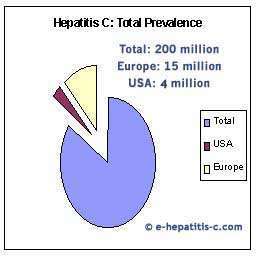What is Hepatitis C?
 Almost one in every 70 persons in the US, that is, 1.45% of the American population, is estimated to be suffering from Hep C. The same is true with India and many other countries.
Almost one in every 70 persons in the US, that is, 1.45% of the American population, is estimated to be suffering from Hep C. The same is true with India and many other countries.
Hepatitis means an inflammation of the liver. When the inflammation of the liver is due to a specific RNA virus that leads to chronic inflammation, it is called Hepatitis C. There are several virus names, such as A, B, C, D, E, etc., that are known to affect the liver, producing Hepatitis A, Hepatitis B, Hepatitis C, etc. In fact, this particular virus has a capacity to induce not only inflammation but scarring of the liver, which is called cirrhosis of the liver. The virus tends to multiply rapidly, hence not allowing it to develop natural antibodies in adequate quantity. This virus is a slow and silent destroyer of liver cells. It may so happen that one may not realize the infection for years together.
After a prolonged state of inflammation, cirrhosis may take place, which may take ten to fifty years. It is a very slow process, if not aggravated by certain food habits and alcohol.
How does one get Hepatitis C?:
The virus spreads through blood or infected syringes. (Similar to Hepatitis A and HIV infection.) Those who are drug addicts using syringes or frequent blood donors (not using sterile syringes) are prone to catch this virus. Tattooing and body piercing could be a source of infection. Organ transplants and dialysis for kidney failure are other important sources of infection. It is uncommon that one may get this virus through sexual contact. It is believed by most today that steady partners may not need physical protection if one partner is Hepatitis C positive. However, unsafe sex with changing partners may prove to be a source of infection. It does not spread by touch, saliva, air, food or water. Mother-to-baby transmission during birth is possible. However, the rate of such transmission is not significantly high.
Written & Approved by-
Dr. Rajesh Shah
M.D. (Hom.)